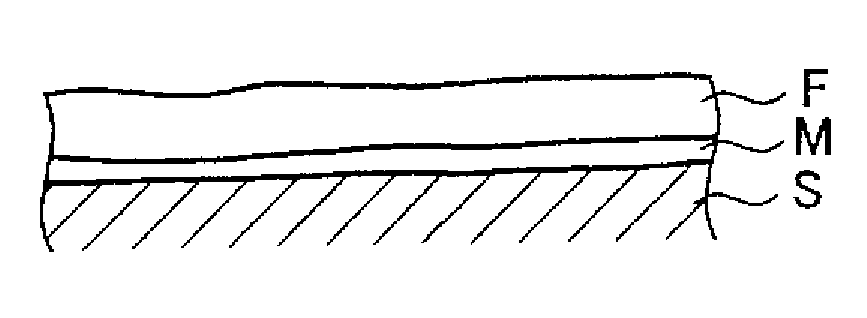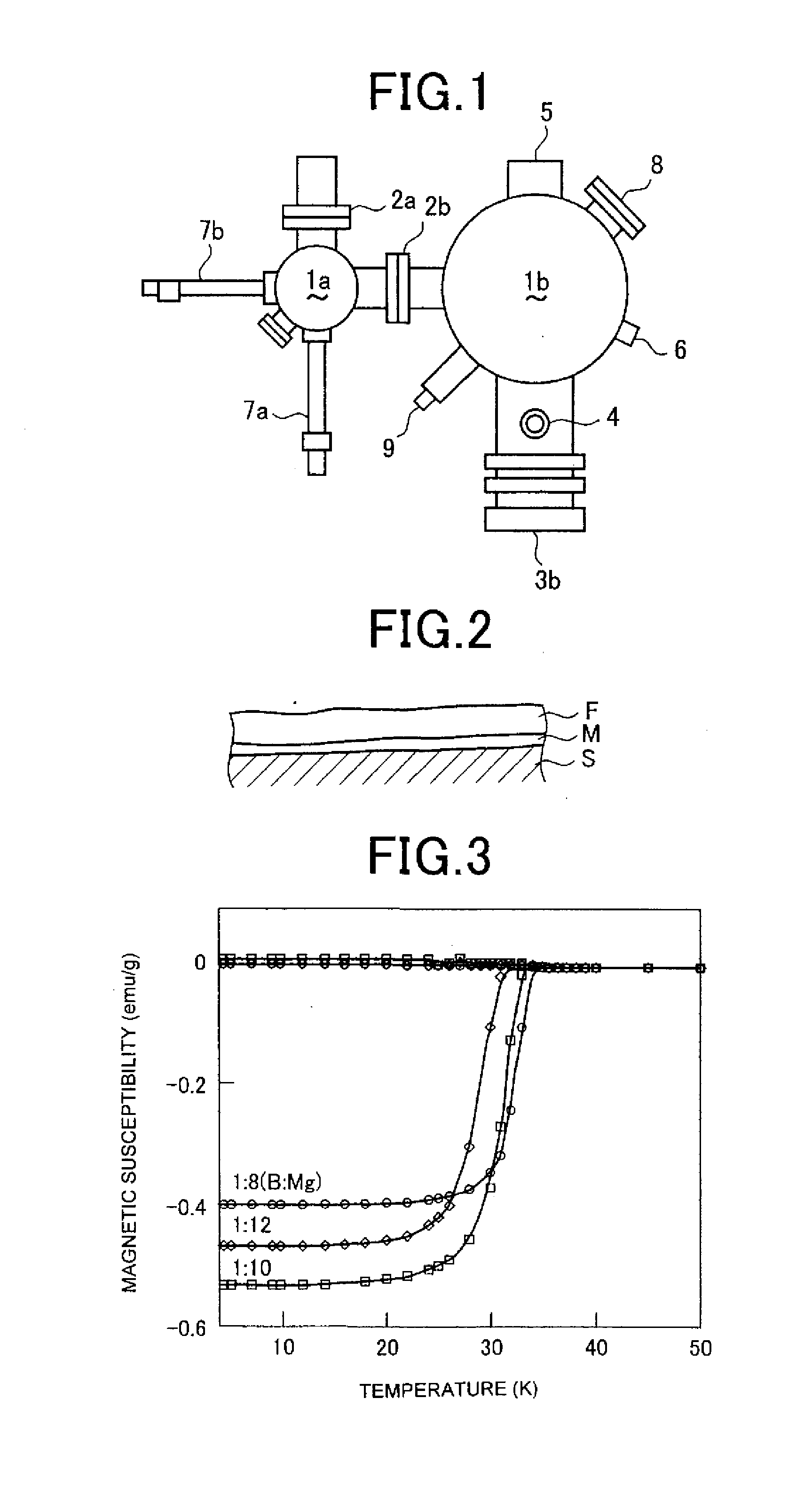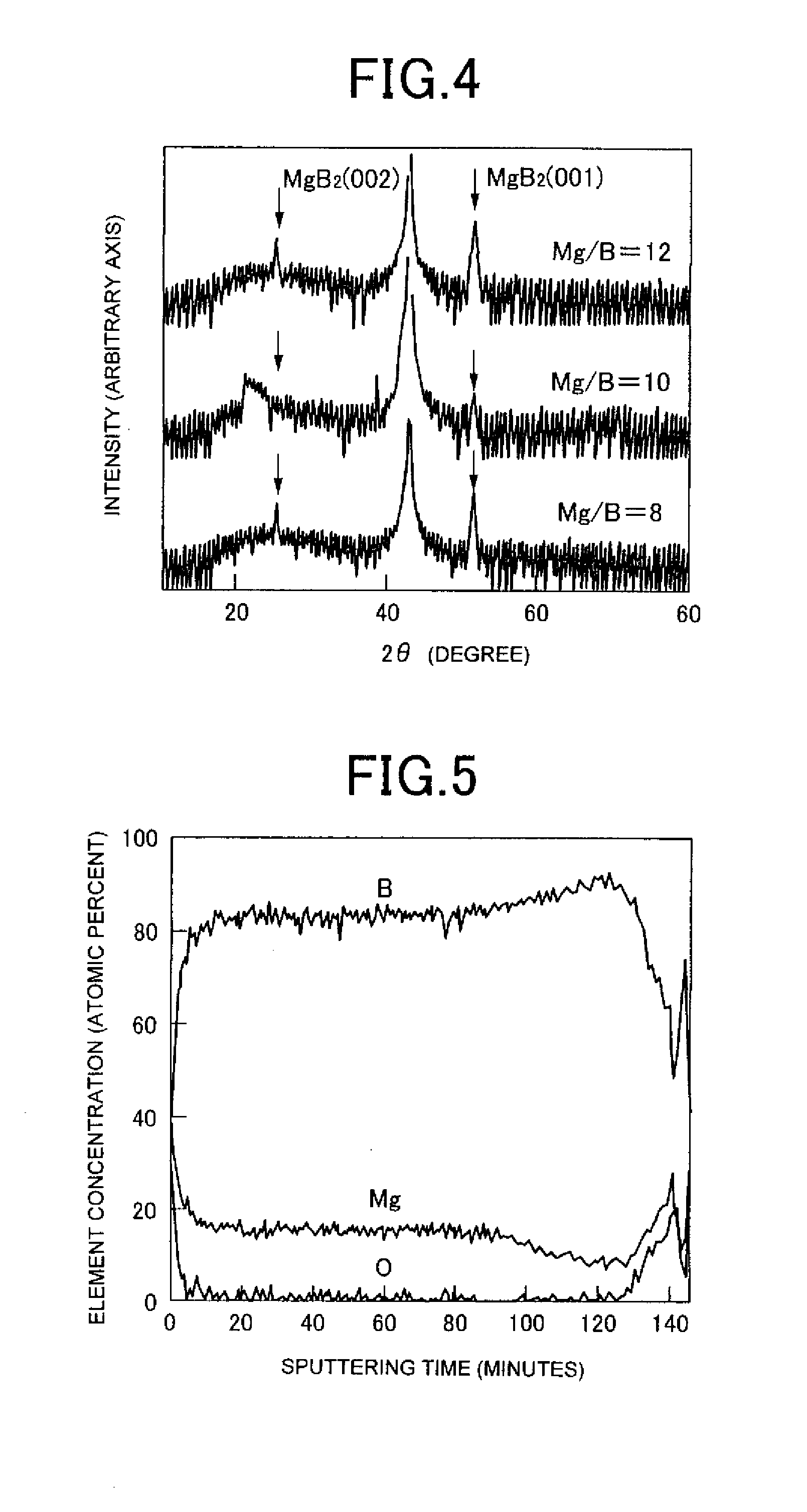Superconducting magnesium boride thin-film and process for producing the same
a technology of magnesium boride and thin film, applied in the field of superconducting magnesium boride thin film, can solve the problems of difficult to obtain high vacuum conditions, adverse influence of superconducting device including multilayer structure and/or josephson junction, and inability to avoid formation, etc., to achieve easy film formation, increase the transition temperature, and increase the crystallinity
- Summary
- Abstract
- Description
- Claims
- Application Information
AI Technical Summary
Benefits of technology
Problems solved by technology
Method used
Image
Examples
example 1
[0041]With reference to an example of forming an MgB2 vapor deposition film using a single crystal MgO(100) substrate, the present invention will be described in more detail. The MgO (100) substrate has a feature in which a clean surface with high flatness can be obtained by a simple method.
[0042]The MgO(100) substrate which was processed to have a clean surface was set in the growth chamber 1b. While the growth chamber 1b was maintained in an ultra high vacuum atmosphere at a pressure of 4×10−7 Pa or less, Mg and B were evaporated from a K-cell and an EB-Gun-cell, respectively, which were used as evaporation sources for Mg and B. While the generation of Mg and B vapors was always monitored by using the quartz oscillation type film thickness meter 6, the flow rates of the Mg vapor and the B vapor were adjusted so as not to generate the variation thereof.
[0043]Although the Mg supplied to the substrate surface is lost at a high ratio due to diffusion and re-evaporation, when Mg once r...
example 2
[0048]In this example, the influence of selection of an underlayer including a substrate material on the film properties was investigated.
[0049]MgBx (x=4 to 6) vapor deposition films were deposited under the same condition as that in Example 1 on substrates made of silicon: Si(111) having an interface shape similar to that of an MgBx vapor deposition film, sapphire: Al2O3, and zinc oxide: ZnO having a high matching crystalline structure. In addition, on substrates made of a stainless steel sheet (typical example of a metal substrate), a glass sheet, and a polyimide film, MgBx vapor deposition films were deposited under the same condition as that in Example 1.
[0050]Furthermore, on Al2O3 plates covered with Ti, MgO, and B, MgO plates covered with Cu, MgO, and B, and an SrTiO3 plate covered with B, which were each used as a substrate provided with a surface modification layer thereon, MgBx vapor deposition films were deposited under the same condition as described above.
[0051]The elect...
PUM
| Property | Measurement | Unit |
|---|---|---|
| Temperature | aaaaa | aaaaa |
| Temperature | aaaaa | aaaaa |
| Pressure | aaaaa | aaaaa |
Abstract
Description
Claims
Application Information
 Login to View More
Login to View More - R&D
- Intellectual Property
- Life Sciences
- Materials
- Tech Scout
- Unparalleled Data Quality
- Higher Quality Content
- 60% Fewer Hallucinations
Browse by: Latest US Patents, China's latest patents, Technical Efficacy Thesaurus, Application Domain, Technology Topic, Popular Technical Reports.
© 2025 PatSnap. All rights reserved.Legal|Privacy policy|Modern Slavery Act Transparency Statement|Sitemap|About US| Contact US: help@patsnap.com



